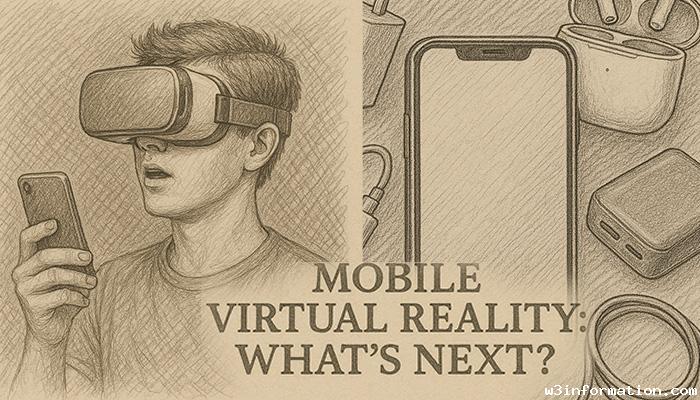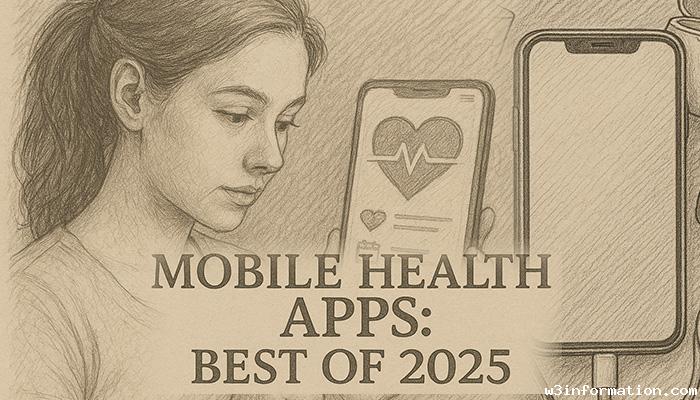Mobile Virtual Reality: What’s Next?
In recent years Mobile Virtual Reality (VR) has captivated global audiences and transformed entertainment, gaming, education, and healthcare experiences. The availability of mobile devices and VR headsets has transformed virtual reality from a futuristic concept into a present-day reality for millions to enjoy. The evolution of technology leads to significant changes in mobile platform VR usage methods. The mobile VR industry remains at a crossroads as we look ahead to its future prospects. The blog will investigate today's mobile virtual reality scene alongside emerging trends and upcoming technological advancements.
Current State of Mobile VR
Smartphones and dedicated VR headsets together power mobile VR technology which delivers immersive experiences through mobile screens. Traditional VR systems demand powerful PCs or gaming consoles but mobile VR delivers user-friendly portability and easy access. The Oculus Quest, Samsung Gear VR, and Google Cardboard have established foundational mobile VR experiences.

Key Features of Mobile VR Today
- Affordable and Accessible: Mobile VR headsets enable users to explore immersive environments without requiring powerful PCs or video game consoles.
- Entertainment and Gaming: The widespread use of mobile VR for VR gaming along with 360-degree video content and interactive experiences now provides an unprecedented level of entertainment immersion.
- Limitations: Despite significant progress in mobile VR technology, it continues to struggle with restricted processing capabilities alongside subpar graphics quality compared to PC VR solutions and insufficient frame rates which some users report as causing motion sickness.
Key Trends in Mobile Virtual Reality
a. Improved Hardware and Performance
Better performance in mobile VR headsets and smartphones leads to advanced user experiences while both devices continue their technological evolution.
- 5G Connectivity: 5G network deployment will enhance mobile VR experiences through reduced latency and the provision of quicker and stable streaming connections for VR content.
- Better Displays: The advancement of smartphone screens through higher resolution displays and faster refresh rates alongside increased pixel densities ensures mobile VR experiences become smoother and more realistic.
- Advanced Sensors: The precision of VR experiences is enhanced by advanced sensors such as accelerometers and gyroscopes and depth-sensing cameras which lead to improved immersion and movement realism.
b. Standalone VR Headsets
Independent VR headsets such as the Oculus Quest and Pico Neo are gaining more popularity among users. These headsets function independently without needing smartphones or PCs which enables a more powerful and immersive virtual reality experience.
- Wireless Freedom: Standalone headsets remove the necessity for cables and deliver total freedom of movement which represents a significant upgrade from mobile VR systems that depend on connected devices.
- Standalone Features: Built-in processors and displays along with storage turn these devices into full VR systems. Mobile VR technology is moving towards standalone systems that deliver increased power and independence.
c. Mobile VR in Social Interaction
VR platforms such as AltspaceVR and VRChat have become popular places where users can interact socially in virtual spaces. Social VR platforms now focus on mobile VR compatibility to provide virtual meeting spaces for people to socialize and work together online.
- Virtual Social Spaces: Through mobile VR users can explore fully immersive virtual realms where they can communicate with others and participate in games and events which creates a connection between digital and physical environments.
- Remote Work and Collaboration: Mobile VR technology offers significant benefits for remote work and virtual collaboration by enabling virtual meetings to run in more engaging interactive environments.
The Future of Mobile Virtual Reality
a. AR and VR Integration
The separation between augmented reality (AR) and virtual reality (VR) technologies is becoming less distinct. Mobile VR technology may advance beyond complete virtual environments to create mixed reality (MR) experiences that merge digital elements with our physical world.
- Mobile MR Devices: Upcoming mobile VR technologies may integrate augmented reality to enable user interaction with virtual elements projected onto their physical surroundings. New opportunities for gaming and shopping emerge alongside educational advancements due to this development.
- AR in Gaming: Consider gaming scenarios where players engage with virtual characters while exploring their actual physical environment. Mobile VR devices will probably include AR technology integration to create a combined immersive experience.
b. VR and AI Synergy
Mobile VR experiences can substantially benefit from artificial intelligence (AI) capabilities. AI algorithms can enable dynamic content generation and better object recognition while delivering VR experiences that adjust to individual user behaviors and preferences.
- Personalized Experiences: AI-driven VR systems can change experiences to suit individual user preferences through tailored virtual game sessions or educational paths.
- AI-Powered Interaction: Virtual worlds will benefit from AI-powered virtual assistants that can guide users through environments while assisting them with tasks and managing virtual objects with more lifelike behaviors.
c. Enhanced Content Creation and Consumption
The need for interactive immersive content will increase while mobile VR stands to become a principal platform for both consuming and producing content.
- 360-Degree Video Streaming: 5G technology will streamline real-time streaming of high-quality 360-degree videos which will provide VR users with more engaging content.
- User-Generated VR Content: New VR platforms enable users to create and share diverse content like 3D environments, games, and virtual tours which will foster a more creative and dynamic VR ecosystem.
d. Smaller and Lighter Headsets
The evolution of mobile VR technology will focus on making headsets smaller and more comfortable to wear. Upcoming mobile VR devices will be designed to be smaller and lighter with increased comfort which will enable users to use them for longer periods without experiencing discomfort.
- Lightweight Designs: Headsets will evolve towards ergonomic designs by integrating breathable materials and adjustable straps while distributing weight more evenly for better comfort during long VR sessions.
- Improved Battery Life: Improved battery technology will enable users to enjoy extended VR immersion without concern for battery depletion.
Challenges for the Future of Mobile VR
Mobile VR has made significant advancements but must overcome numerous obstacles to achieve its full potential.
- Motion Sickness: Improved VR technology still leaves many users susceptible to motion sickness because of system lag and insufficient frame rates. Reducing these issues is a key challenge.
- Limited Content: The availability of content plays a crucial role in determining the success of VR technology. The mainstream adoption of technology means that developers need to create more high-quality mobile VR content across games, educational programs, and entertainment platforms.
- Affordability: The high cost of premium mobile VR devices presents a barrier to widespread adoption that can be overcome through substantial price reductions of standalone devices.
Conclusion
Mobile Virtual Reality has rapidly evolved to offer novel entertainment, communication, and educational experiences for users. The development of mobile VR will expand significantly as technological advancements progress. Mobile VR's future shows great potential with developments in AR integration and AI improvements together with lighter and cheaper headsets. Mobile VR faces several obstacles like limited content access along with motion sickness and accessibility difficulties. Mobile VR will keep changing our digital interactions and delivering immersive experiences to large audiences once current obstacles are resolved.
 DIY Holiday Decor Ideas on a Budget
DIY Holiday Decor Ideas on a Budget
 How to Create a Healthy Meal Plan for the Week
How to Create a Healthy Meal Plan for the Week
 Discover your top 10 comforting meals to enjoy during the winter season
Discover your top 10 comforting meals to enjoy during the winter season
 Tips for Stress-Free Holiday Travel
Tips for Stress-Free Holiday Travel
 Mobile Video Editing Apps to Try
Mobile Video Editing Apps to Try
 Mobile Health Apps: Best of 2025
Mobile Health Apps: Best of 2025